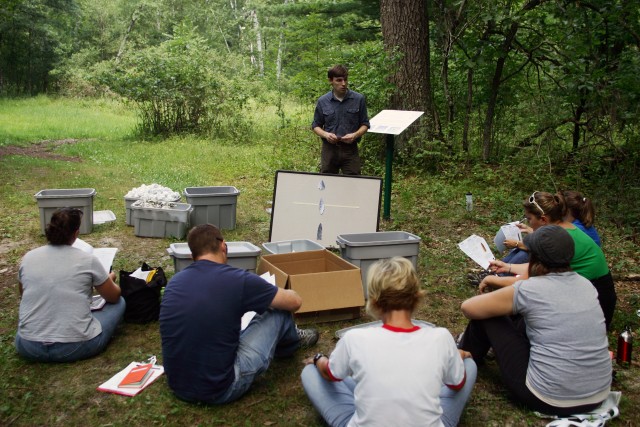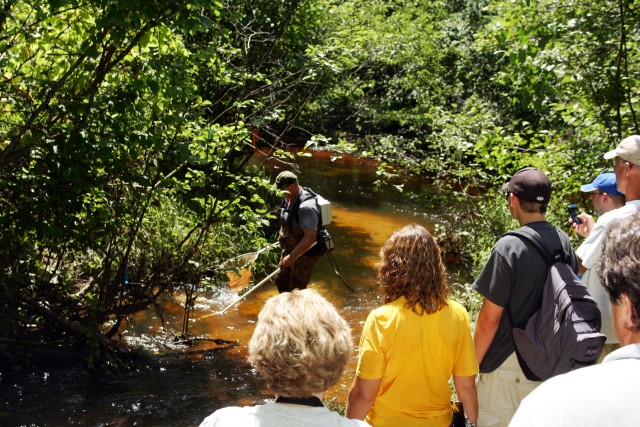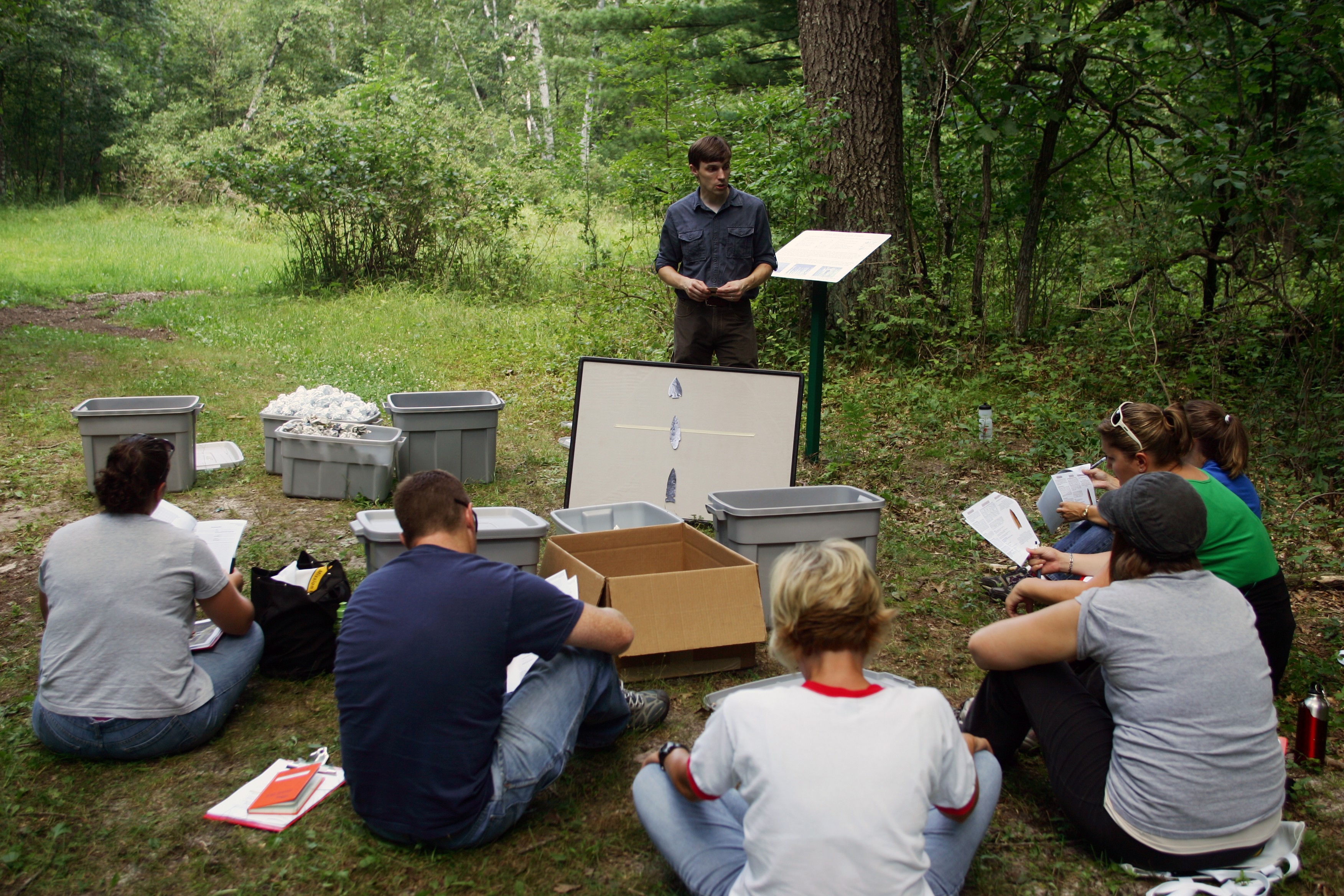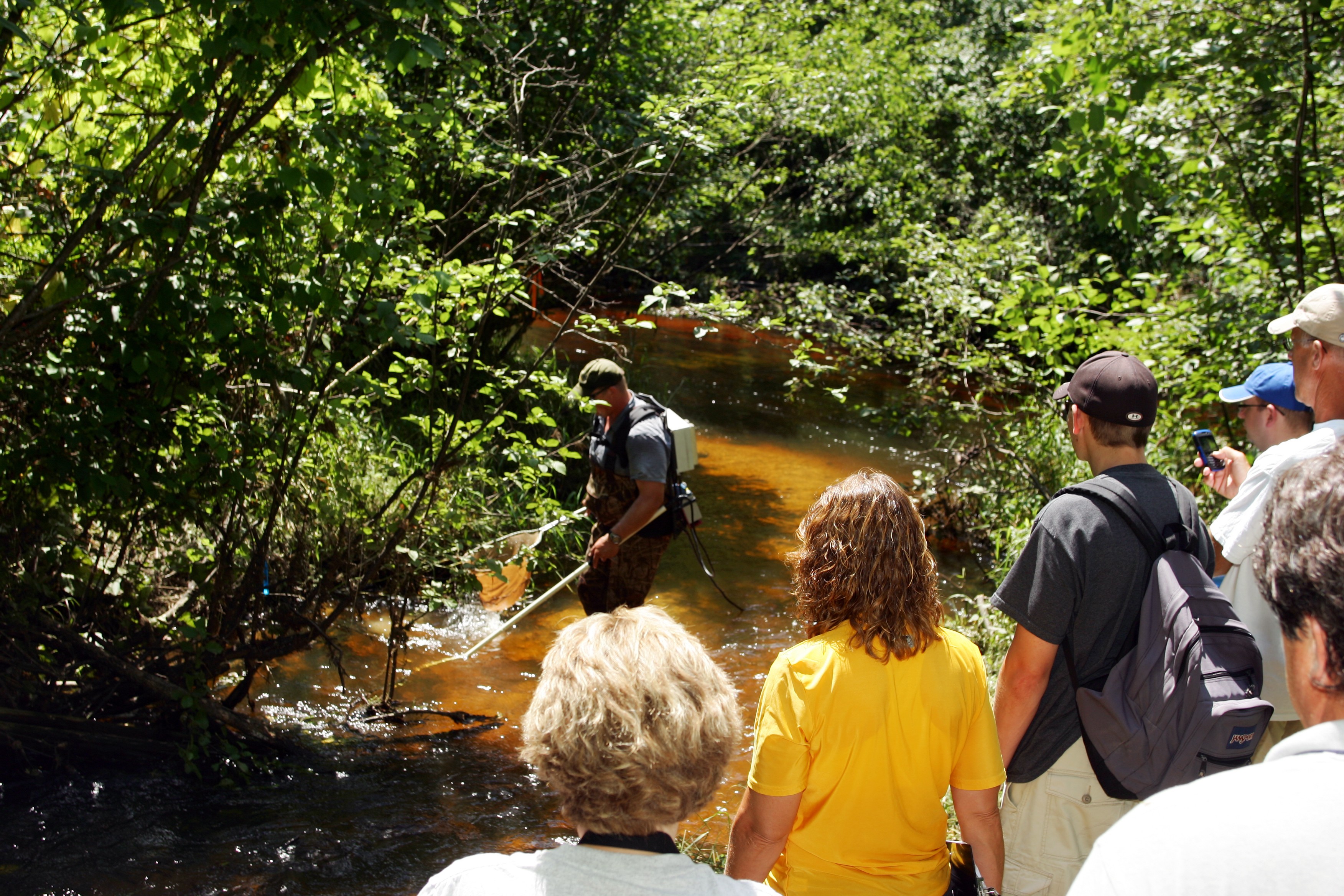FORT McCOY, Wis. -- Fort McCoy allowed environmental and natural resources staff members to share their knowledge and on-the-job experience with teachers from nine area school districts at a July 20-21 workshop here.
Mark McCarty, chief of the Fort McCoy Natural Resources Branch, said the science, technology, engineering and mathematics program workshop provides innovative instructional programs, supports students who typically are underrepresented in STEM areas of studies and increases the academic achievement of students in these subjects. The program grant was funded by the U.S. Department of Education and was administered through the Wisconsin Department of Public Instruction.
By strengthening ties between the school districts involved and Fort McCoy, the program supports the principles of the Army Community Covenant, McCarty said.
"The program helps teachers prepare students to fill future roles in these fields by showing them real-life examples," McCarty said. "It also can lay the foundation to help prepare students for success in their future academic work or career fields of choice by teaching them research discipline and the payoff for doing detailed work."
Fort McCoy professionals provided information in a round-robin format with 10 different stations.
Teachers spent approximately 45 minutes at each station, where they listened to a brief presentation, saw a practical demonstration and did hands-on activities.
Teachers learned about fisheries, lake and stream water quality, orienteering and Global Positioning System, cultural resources, invasive species, threatened and endangered species, forestry, wildlife, and drinking water programs at Fort McCoy, McCarty said.
The invasive species training included use of GPS equipment to log survey plots and map invasive species populations. This could bring up-to-date technology instruction to the classrooms, he said.
Dr. Jerrilyn Brewer, the grant developer for the Sparta Area School District and Norwalk-Ontario-Wilton Schools, said the district pursued the Math-Science Partnership Grant for the professional development opportunities it provided teachers. Sixty teachers were chosen to attend the training under the grant. Wisconsin school districts represented were Sparta, Norwalk-Ontario-Wilton, Bangor, Black River Falls, Cashton, La Farge, Mauston, Melrose-Mindoro and Royall.
"A unique aspect of our grant is the involvement of the business and government sectors in the teachers' professional development," Brewer said. "Teachers will improve their ability to understand both mathematics and science content and will, in turn, teach these subjects more effectively to students. Students will understand and be able to apply the concepts at a higher level, thereby increasing their ability to see the relevance of math and science in the 'real world.'"
"By having our teachers experience math and science in a hands-on setting, they can share and/or replicate many of their experiences with their students. A primary goal of this grant is to get youth hooked on mathematics and science."
During this summer's field work, the teachers visited an organic farm and a local winery. Brewer said the teachers also will participate in a minimum of 100 hours of professional development per year for the next three years. The culminating event each summer is a two-week summer institute.
Next year, the teachers will focus on the career clusters of manufacturing, transportation and logistics. If both sides are willing, Brewer said they again hoped to partner with Fort McCoy.
Cynthia Hearn Dorfman from the U.S. Department of Education visited the program. She is responsible for developing and implementing the Office's Organizational Assessment, which measures the overall effectiveness of the office of communication outreach to provide actual work experience to teachers A,A in this case in the math and science areas.
The work this year should strengthen the ties between the school districts involved and the Fort McCoy environmental program, and help support the Army Community Covenant, Brewer said.
"We believe it is very important for teachers to understand the far-reaching environmental work that is being done at Fort McCoy," she said. "We think this can be a win-win situation for everyone, but especially Fort McCoy. Raising the public's awareness about the good work that is being done in our own backyard is a good thing. Fort McCoy can serve as an important role model for environmental education and preservation."
Jeane Frank, a second-grade teacher in the Sparta Area School District, said she gleaned a lot of good ideas to teach younger children about science.
Fort McCoy environmental professionals had many tips about how to conduct experiments in the classroom.
One example was a cultural resources demonstration where post Archaeologist Stephen Wagner showed how to create a simulated archaeological research area by using old papers or coins. Students would dig into these research areas and learn the older items would be in the lower layers and the newer items would be in the upper layers, closer to the surface.
John Noble, fisheries biologist, showed how they could use a tape measure, an apple and a stop-watch or a watch to get approximate water-current information.
"If you're outside, something can go wrong with equipment," Noble said. "If you have a backup plan, you can still get useful data."
Bruce Brewer, a middle school teacher (sixth to eighth grades) in the Bangor Area School District, said it was good to learn real-world applications of the subjects and information taught in the classroom.
Students could read about the information in a text book, he said. "But if we tell them this is how the information is used in a profession, they're more likely to pay attention and to learn it," he said.
McCarty said the exchange of ideas helps build support for the installation's programs and missions and supports the Army Community Covenant by sharing information with the community and fostering better relations between the post's environmental professionals and the educational professionals in area communities.
Teachers may be able to develop instruction from the workshop at Fort McCoy that would support local, state or federal environmental programs, McCarty said. For example, the curriculum may support efforts of the Wisconsin Department of Natural Resources and/or local Lake Associations to collect data for and contribute biological and water-quality information.
Water-quality monitoring or lake limnological studies could become standing operating practices/procedure for school curriculum and provide a cost-beneficial endeavor for the agency or lake association.




Social Sharing